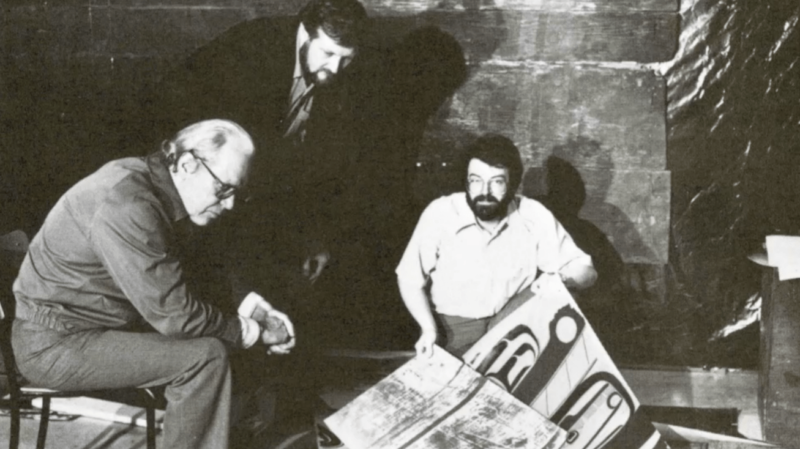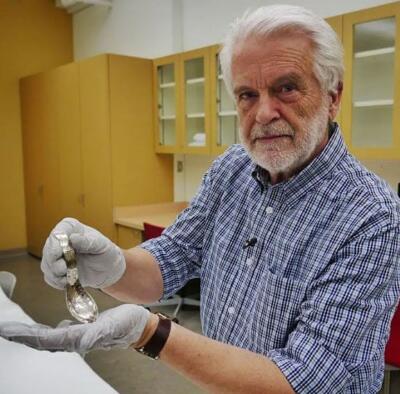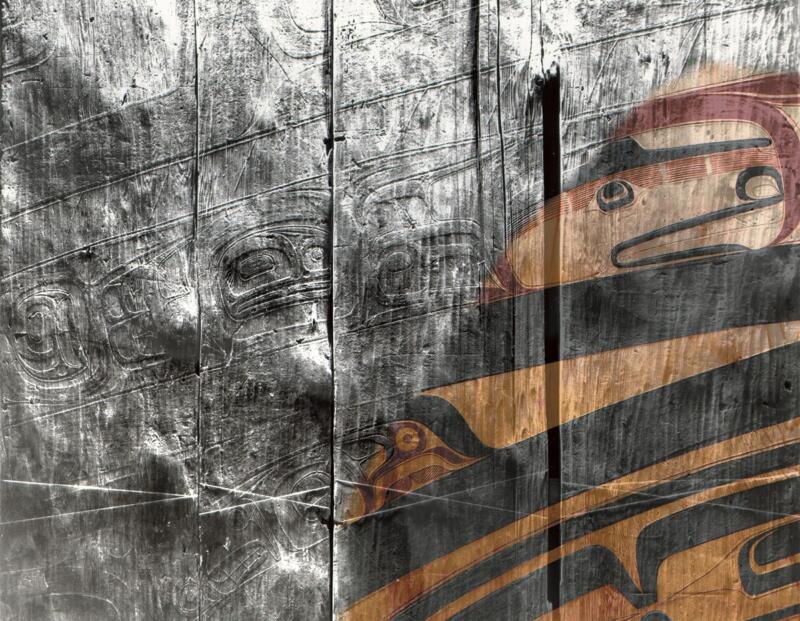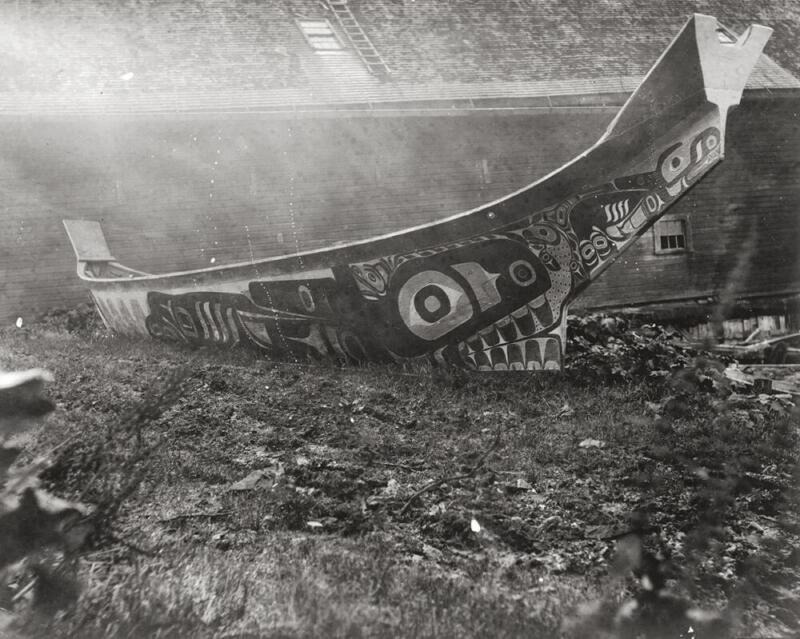1680 Northwest Coast artist archive
The Transforming Image: Painted Arts of Northwest Coast First Nations. Second Edition
by Bill McLennan and Karen Duffek
Vancouver: Figure 1 Publishing, 2022 in collaboration with the Museum of Anthropology, University of British Columbia (first published by UBC Press, 2000; reprinted by Douglas & McIntyre and University of Washington Press, 2007)
$65.00 / 9781773271989
Reviewed by Alan Hoover
*
 All Indigenous communities from Yakutat Bay in Southeast Alaska to Rivers Inlet on BC’s central coast, the Tlingit, Haida, Nisga’a, Tsimshian, Haisla, Heiltsuk, Nuxalk and Oweekeno, share a common two-dimensional painted design style called northern Northwest Coast. The first edition of this impressive book, published in 2000, provided both Indigenous artists and communities access to photographic images of painted designs found on nineteenth century and older bentwood boxes, chests, and drums, as well as monumental house fronts and screens.
All Indigenous communities from Yakutat Bay in Southeast Alaska to Rivers Inlet on BC’s central coast, the Tlingit, Haida, Nisga’a, Tsimshian, Haisla, Heiltsuk, Nuxalk and Oweekeno, share a common two-dimensional painted design style called northern Northwest Coast. The first edition of this impressive book, published in 2000, provided both Indigenous artists and communities access to photographic images of painted designs found on nineteenth century and older bentwood boxes, chests, and drums, as well as monumental house fronts and screens.

This edition republishes the text and images from the first edition with an additional eight-page preface by Museum of Anthropology curator and co-author Karen Duffek. The new preface includes 10 additional images and comments by 6 contemporary Northwest Coast artists: Gwai and Jaalen Edenshaw (Haida), NÚsi – Ian Reid (Heiltsuk), Nakkita Trimble (Nisga’a), Bracken Hanuse Corlett (Wuikinuxv/Klahoose), Joel Good (Snuneymuxw), and Müsii’n – Phil Gray (Tsimshian/Mikisew Cree). The second edition has a handsome new hard cover replacing the fly-leaf cover of the first edition. The redesigned book, with its added use of a larger front size in red for chapter headings, is a striking design upgrade from the first edition.
The authors state that this book “arose from the need of current generations to gain access to the creative achievements of their ancestors and to build on the cultural knowledge that the old paintings could reveal.” Without a compendium of images in one place contemporary artists and students could not access the great legacy of northern Northwest Coast painting as seen on the hundreds of painted boxes, chests and other artifacts held in North American and European museums and private collections. This book has brought together more than one thousand painted compositions.


Most of the images in the book were captured through the innovative and dedicated work of the book’s co-author, the late Bill McLennan. He used black and white infrared film and other photographic techniques to capture painted compositions that were obscured by the surface build-up of smoke, time, and physical wear and tear. The infrared film reacts differently to old black and red mineral-based paints, unpainted wood, and paints acquired from European and American traders. The images captured by infrared film are black and white, visible as a range of tones. By comparing remaining fragments of original paint with colour swatches of modern acrylic paints, artists can approximate the original colours which can then be applied to the black and white positives to create an image. This process allows the viewer to appreciate the designs, separate from the containers that the compositions “decorated.”


The book also demonstrates the use of computer applications to deal with distance and distortion when reconstructing the wonderful painted designs on large house front paintings that are best known from historic photographs that in many instances record only fragments of the complete design.
Lyle Wilson (Haisla) is the contemporary Indigenous artist most prominently featured in this publication. He wrote the Foreword and an essay, “The Painted Line,” in which he contrasts painting and 20th century printmaking, and he also contributed graphic reconstructions including three Heiltsuk, two Nuxalk, and one Tsimshian house front painting. In Bill McLellan’s words, Lyle Wilson “made a significant contribution to this book both through his words and through his superbly drawn and painted reconstructions of small- and large-scale works.”

These painted objects were, and are, squirrelled away in museums and private collections in both North America and Europe, inaccessible to the descendants of the artists who made them. Beginning in 1980 the University of British Columbia Museum of Anthropology staff, students, and Indigenous artists through the Image Recovery Project began to assemble an image bank of these painted compositions at the Museum of Anthropology. These compositions are available in this book and in a digital format called the Reciprocal Research Network, an available online research tool for people interested in northern Northwest Coast design.

The simplest way to give the potential reader an overview of this book is to mention briefly the focus of each chapter. Chapter 1 looks at infrared photography and subsequent image reconstruction, a procedure that has brought images to the light of day that previously could not be seen because of the grime and wear that obscured them.
Chapter 2 considers the antiquity of northern Northwest Coast two-dimensional designs and presents evidence of its earliest stylistic development. Included is a seven-page presentation and discussion of old Kwakwaka’wakw box lid flanges described as the “oldest surviving, consistently painted artifacts of the Northwest Coast.”
Next up is Chapter 3, which introduces painted bentwood containers and house-front screens as expressions of wealth and rank in Northwest Coast cultures. Chapter 4 considers how artists translated these concepts into visual form.
In Chapter 5, we learn how to interpret the different compositions, some as recognizable images of crest figures, while others are abstract and difficult to decipher.
Chapter 6 discusses regional styles of painting, while Chapter 7, “The Hand of the Individual,” considers personal style and presents in detail the work of the Bella Bella (Heiltsuk) artist Captain Richard Carpenter (1841-1931).

The last chapter, “A Transforming Tradition,” examines the work of contemporary artists as they interpreted and transformed Northwest Coast graphic art. Under the sub-heading “Persistent Voices: Painters of the 1920s to 1960,” the chapter illustrates the work of Yehlh naw, a Tlingit artist from Sitka Alaska; Charlie James (Kwakwaka’wakw, c. 1870-1938); Frederick Alexcee (Tsimshian, 1854- c. 1944); Mungo Martin (Kwakwaka’wakw, c. 1881-1962); Henry Speck (Kwakwaka’wakw, 1908-1971).

The final section, “Into New Directions,” features the innovative work of Doug Cranmer (Kwakwaka’waka, 1927-2006) and Robert Davidson (Haida, b. 1946).

This new edition of The Transforming Image: Painted Arts of Northwest Coast First Nations is an essential compendium of, and guide to, northern Northwest Coast two-dimensional design. It is a useful companion to Franz Boas’ pioneering 1897 essay “The Decorative Arts of the Indians of the North Pacific Coast” and Bill Holm’s 1965 seminal book, Northwest Coast Indian Art: An Analysis of Form.
The enormous and daunting task of assembling images of Northwest Coast painted compositions from more than fifty institutions in North America and Europe, often using innovative photographic techniques, is admirable. The University of British Columbia Museum of Anthropology, its staff, students, and contributing artists are to be congratulated on this fine second edition of an important source book for northern Northwest Coast two-dimensional painted designs.
*

Alan Hoover worked for 33 years at the Royal British Columbia Museum as a curator and manager. He is co-author with Peter Macnair of The Magic Leaves: A History of Haida Argillite Carving (Royal BC Museum, 2002); co-author with Eugene Arima of The Whaling People of the West Coast of Vancouver Island and Cape Flattery (Royal BC Museum, 2011); co-author with Peter Macnair and Kevin Neary of The Legacy: Tradition and Innovation in Northwest Coast Indian Art (Royal BC Museum, 1980). He also edited the anthology Nuu-chah-nulth Voices, Histories, Objects & Journeys (Royal BC Museum, 2000), and recently published Making a Chaputs: The Teachings and Responsibilities of Canoe Maker (Royal BC Museum, 2022), with Joe Martin. Editor’s note: Alan Hoover has also reviewed books by Sara Florence Davidson & Robert Davidson, Jack Davy, Darren J. Martens, and Colin Browne for The British Columbia Review. His book Southern Northwest Coast Indigenous Canoe Racing: A Brief History has been reviewed by Sanford Osler and Making a Chaputs is reviewed by Isabel Nanton.
*
The British Columbia Review
Publisher and Editor: Richard Mackie
Formerly The Ormsby Review, The British Columbia Review is an on-line book review and journal service for BC writers and readers. The Advisory Board consists of Jean Barman, Wade Davis, Robin Fisher, Barry Gough, Hugh Johnston, Kathy Mezei, Patricia Roy, Maria Tippett, and Graeme Wynn. Provincial Government Patron (since September 2018): Creative BC. Honorary Patron: Yosef Wosk. Scholarly Patron: SFU Graduate Liberal Studies.
“Only connect.” – E.M. Forster
